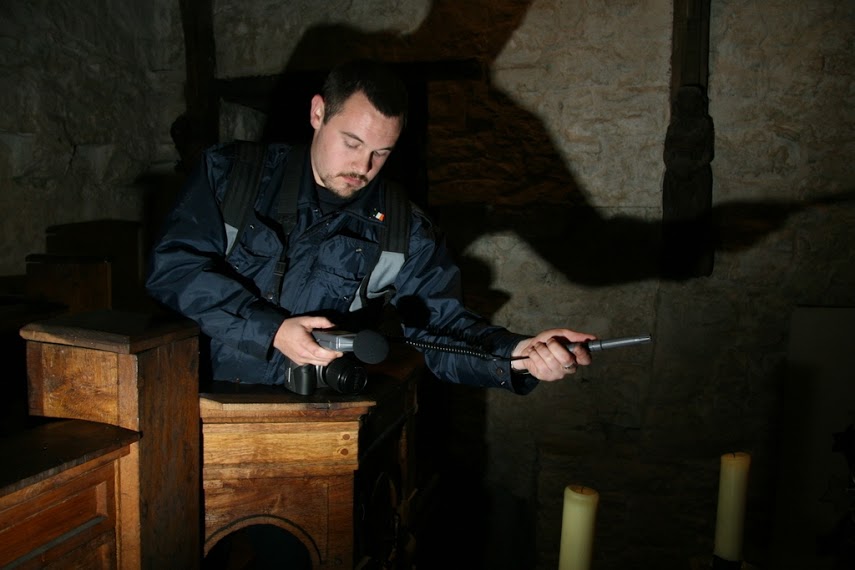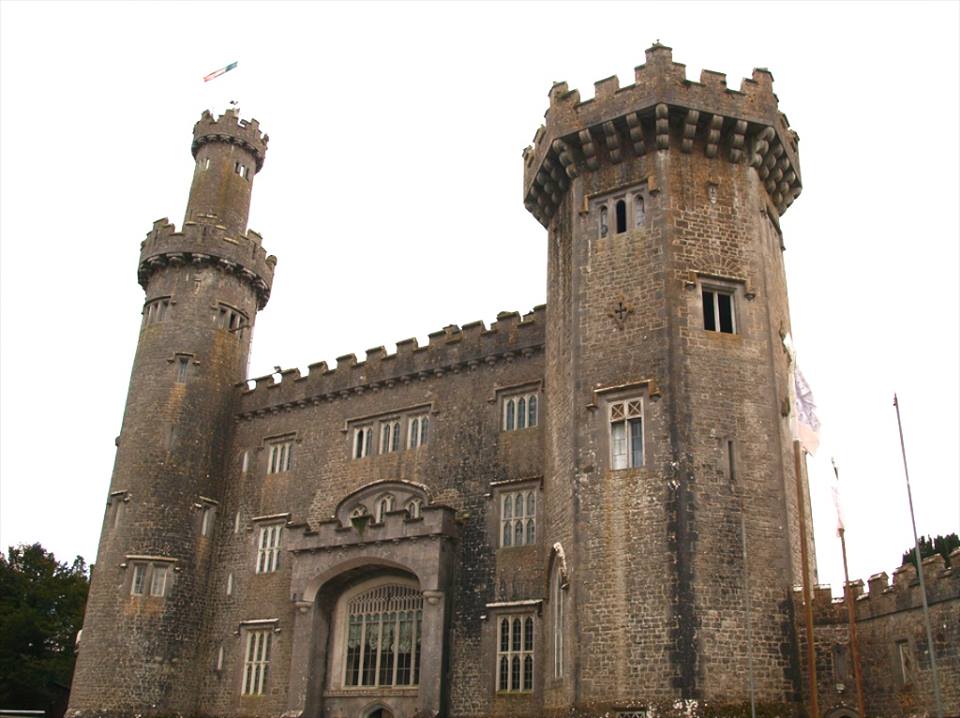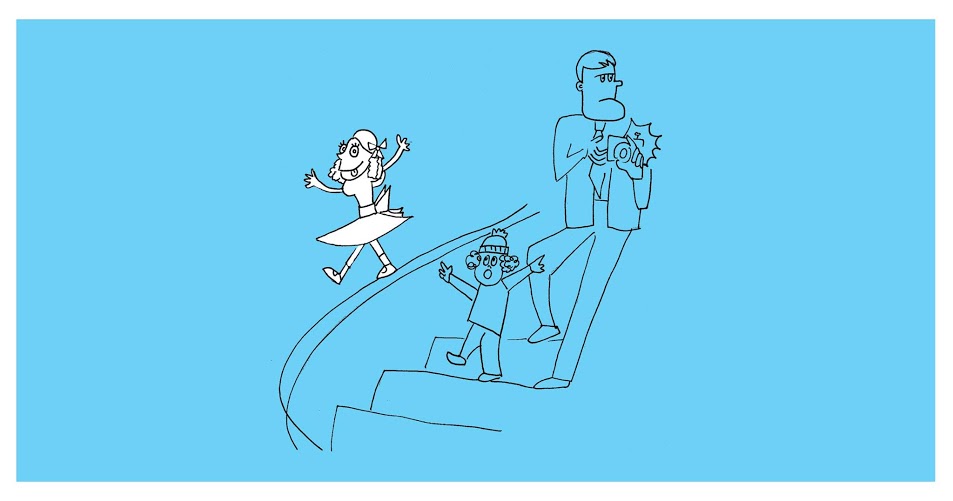Words | Jane Fallon Griffin
For the vast majority, ghosts and ghouls do not concern us aside from the odd ill-advised horror movie, lone nights at home in the dark or visiting that one house who fashioned themselves as the Adam’s family every October.
However, one Irish group has made it their business to work with those with unfinished business by travelling around the country in search of active spirits.
“Lead investigator, David Wenger, explains how they take “a logical approach to their investigations.”
Established in 2004 by founder Ian Murphy the Paranormal Research Association of Ireland (PRAOI) aims to investigate claims of paranormal activity confidentially and free of charge. Lead investigator, David Wenger, explains how they take “a logical approach to their [our] investigations.”
“Our primary goal is to either conclusively prove or disprove the existence of the Paranormal through verifiable means, and, as a consequence, we do not employ Psychics or Sensitives in our investigations as this would conflict with our scientific ethos”.
He says of Ireland “is steeped in ancient history’ and is optimistic for the development of paranormal investigation, saying ‘people are openly talking about the paranormal over the past couple of years. compared to when such things were never talked about outside the house’. Since emigrating, their founder Ian Murphy has set up sister groups in Boston, New Hampshire and Colorado.
Feeling that an article on a paranormal group gave me license for organising my own personal ghost-busting adventure, I rang David asking for the best starting point. This investigation needed to be real. I wouldn’t stand for any of this namby pamby Scooby Doo style hauntings which, I was always devastated to discover, were mere mortals in disguise. Chatting to David on the phone he was definite in his choice, the place the group keep coming back to, where it all started for him on his first investigation: Charleville castle.
As a pair of students walking along a dark woodland trail in search of a lesser known castle, I couldn’t help but feel we were in the start of a horror movie.
A few weeks later, one bright but cold Wednesday October afternoon, I found myself in Tullamore, Offaly with two others in tow. The designated driver lost their courage somewhere along the Kildare-Offaly border and so two of us found ourselves outside the castle gates. Having ditched the car along with the third member of our band of novice ghost busters, we set off walking down a long winding avenue cloaked by low hanging branches of drooping old trees. The avenue was dark and extremely long and offered no reassuring signposts but rather numerous dirt tracks veering off to the left. I couldn’t help but feel that this was in fact very similar to the start of a horror movie. A pair of student journalists complete with fancy camera and recording device, walking along a dark woodland trail in search of a lesser known castle, essentially sitting ducks for a Blair Witch style haunting.
Eventually the trees parted, revealing the dark outline of the stone castle. Two thick turrets flanked the entrance to the castle and on its grounds a church roof and other small stone structures were visible. At the door I looked up and saw a large metal bell attached to the oak door. I pulled down hard on the thick rope and released it. The sound startled me and I stepped back just as the door began to creak. It opened slowly before jolting to a halt at the end of the latch’s tether and an elderly eastern European woman looked quizzically out of the crack. I managed to stammer student journalist and Trinity, before the door closed again and the woman disappeared. Admittedly I had taken the spooky castle idea very lightly, but as I exchanged a glance with my accomplice it had to be said, this was way eerier than I had planned. Then came the scrape of the latch being pulled across the wood and the oak door was flung open.
Stepping into the castle foyer was like stepping back into a different time. Unlike other Irish historic monuments, this castle lacked the traditional educational displays, the glass cased objects, the numerous fussy information boards and most notably the velvet ropes tracking the visitor route. This was a castle as raw and historical as I had ever seen it. The third floor is dilapidated, there are dungeons too unsafe to enter, the first floor is in the process of preservation by volunteers while the current owner occupies the second floor.
“In 1861, when she was almost eight, Harriet Bury fell to her death from the top of this staircase. Various incidents have occurred since.”
A tanned dark haired man appeared introducing himself as Mateo, an Italian volunteer and student of languages and tourism in Italy. Mateo lead us from room to room, each more detailed than the last, offering tidbits of both historical and supernatural information. Regardless of your beliefs, or lack thereof, in the supernatural, the castle itself is well worth a visit. We passed through music rooms, ballrooms, breakfast rooms even a boudoir with masonic décor. Finally, he led us to Harriet’s staircase – what we had been eagerly anticipating. A wooden staircase ascends up the right tower and wraps itself around the inside of the structure. Looking up, the bannister can be seen to continue to rise for what seems an eternity. If someone were to climb to the top they could look straight down to the bottom of the tower, or they could fall. There is a reason that this is thought to be one of the most haunted locations in Ireland and Europe. In 1861, when she was almost eight, Harriet Bury, the third daughter of the third owner of the castle, fell to her death from the top of this staircase. The young girl with blonde curly hair is said to have heard her cousins playing downstairs and to have mounted the bannister in order to slide down to meet them. In the process she fell to her death just before her eighth birthday. Various incidents have occurred since. Volunteers and visitors alike attest to have heard singing on the staircase as well as a loud, childlike scream. Children in particular are said to interact with the spirit of the little girl: the owner’s son went missing as a young child and was discovered on the staircase. He placated his concerned mother, telling her that the little blond haired girl had been singing and helped him down the stairs. The same child also had an imaginary friend as a child: her name was Harriet. The organizer of the Castlepalooza festival, which takes place on the estate’s grounds annually, once stayed in the volunteer’s quarter in the castle. Waking up in the middle of the night, he rolled over to find himself face to face with a blonde-haired child standing stationary beside his bed. Thinking it was a grandchild of the owner, he asked her to wait while he dressed and that he would take her home. When he returned she had vanished. He ran to the owner to tell her that her grandchild was wandering the castle, possibly sleep walking but none of her grandchildren were staying that night. The organizer left the castle at once in the middle of the night seeking out accommodation in Tullamore town and he and many of his staff now continue to refuse to sleep in the castle.
“99.9% of the time it’s a plumber, not a priest, that you need”
With all these ghost stories leaving me sufficiently creeped out, I joined the rest of the volunteers outside. While the idea of a paranormal society conjures up some fantastic notions regarding the lives of those involved I found them to be surprisingly normal and friendly people. Lead investigator David Menger was well-spoken, with an accent that represented his roots in America, and told me he works in airport security. I also met Traze Shallow, a young woman with jet black hair, delicate tattoos and a Dublin accent not dissimilar to my own, who is the Charleville Volunteer and former team case manager of the PRAOI.
Sitting outside the castle on a picnic bench she admits to having been skeptical at first, but she explains that what drew her to the association was the approach they took: avoiding psychics and preferring instead to either prove or disprove something using more scientific methods. While I visited the castle armed with little more than a camera and accompanied by a fellow Trinity student, the organisation tends to visit in large groups and bring a suitably large quantity of equipment. David Menger introduced me to some of the instruments that he and his team use. The team depends on infrared cameras, which record in both light and darkness, environmental tools that resemble thermometers to investigate temperature and air pressure, digital voice recorders and hand held cameras and triggers – objects which are likely to cause a supernatural response.
Traze recalls how, one night, they commented that it was so cold that they would love a hot whiskey. Later listening back to the recording device Traze discovered another voice which rasped “Me too”.
They use these machines to measure the of environment of a room. If there is a change measured in the location they attempt to find a logical explanation for it, and Traze herself says that “99.9% of the time it’s a plumber, not a priest, that you need”. Indeed, what strikes me about their approach was the lack of snap judgments made among the team and their insistence on actual evidence. They do not simply visit locations already deemed haunted by others spend the night listening out for things that go bump in the night to support the claim of a haunting. No, David and his team approach new sites with a skeptical mindset, refusing to take the word of those gone before them, and instead use their equipment in an attempt to first find logical explanations. I liked this way of thinking, something about it made the group seem more legitimate, as though they themselves would happily dismiss rusting old creaking pipes as nothing more than rusting old creaking pipes.
However, the group are convinced the haunting of this particular castle is legitimate. Traze refers to the spirits present in the castle as “The Others”.
Distant conversations have been heard and, most frequently, the sounds of a small child laughing and singing.
Both Traze and Dave have had unusual experiences particularly with the recording devices. While there were no audible voices during their investigation, a playback revealed voices that did not register at the time. Traze recalls one such instance where she and three others investigating in the left turret commented that it was so cold that they would love a hot whiskey. Later listening back to this interaction on the recording device Traze discovered another voice which rasped “Me too”. For David, on first entering the castle, he explains “I heard what appeared to be a small girl bouncing a ball and running up and down the hall while I was house sitting for the trustees one night”.
Illustration by Sophie Meehan
Traze, who will often stay in the castle with other volunteers, says they too report seeing people walk into rooms that subsequently turn out to be locked and, when opened, reveal no inhabitants. Distant conversations have been heard and, most frequently, the sounds of a small child laughing and singing.
Whenever David visits, he always greets Harriet upon entry to the castle who he says he hears giggling from a distance
The investigators are not afraid of this though. In fact, they seem to even have developed a friendly relationship with some of the ghosts. Whenever David visits, he always greets Harriet upon entry to the castle who he says he hears giggling from a distance. As Traze explains “if you respect them, they’ll respect you.” Traze has put this motto into practice during the many nights she has spent in the castle. She remembers one night feeling someone stroke the side of her face. Assuming it was her duvet she tossed and turned where upon she felt it again. She then felt the pressure of someone sitting at the bottom of her mattress and heard the door open. She called out in the darkness “I acknowledge you are there, please leave me be and let me sleep” and with that there was silence – no movement against her face, no slamming of a door, no pressure on her mattress.
Both Traze and David joined the association as a result of childhood experience.
When I ask Traze where her belief in the paranormal began, she explains her first experience was as a child in her parents home, but she doesn’t elaborate. Like Traze, lead investigator David joined the association as a result of childhood experience. For David, it was during his childhood in Boston with his twin brother where he first encountered paranormal activity and he has been fascinated ever since. He and his brother regularly heard unexplainable footsteps, saw objects move of their own accord and even experienced night terrors, which are a form of sleep paralysis. Such terrors convinced him that his childhood room was on fire and resulted in David leaping out of the window to escape. Since his childhood, David has continued to experience these terrifying yet unexplained things: “I have had many experiences from hearing my grandmother call my name who past away a few years ago to more sinister events where items in my bedroom have been thrown through the air”.
These events seem like they might be quite traumatic, but David has embraced it and found a group of people with similar experiences in the P.R.A.O.I. Rather than distancing themselves from them, they continue to try to seek out the source of these experiences. When I ask why they keep pursuing hauntings despite their past experiences, David explains “we all have our own personal reasons for searching for answers”.
“we all have our own personal reasons for searching for answers”
There is of course a metaphysical element to their investigations. I was curious as to what the team thought that the purpose of those they encountered was. David explained that the vast majority of the team would, in fact, believe in some form of afterlife. In terms of the ghosts, they offer a number of explanations as to why they have not passed on, or simply why they have appeared. David states that there are different kinds of hauntings: in some cases he maintains that ghosts merely come to pay a visit to a location once important to them. Then there are residual hauntings, in which the location haunted was the setting of a traumatic incident for an individual and that, rather than haunting it, part of them stays there and acts out similar things when interacted with – like a reflex action. But, in the case of Charleville Castle, this is an example of where they believe that the person did not pass on, due to the frequency with which she is heard and seen. This is the case of Harriet.
Walking back down the avenue I felt as skeptical as ever about the existence of ghosts, ghouls and poltergeists, yet I felt an empathy with the investigators that I hadn’t anticipated. While I did not relate to the belief in paranormal activity, I did relate to the very kind and genuine men and women that I found driving the Irish paranormal movement. While I, along with the vast majority, may have little time for paranormal investigations, it seemed important that the people I met that day have an outlet in which to meet like-minded people who have, for whatever reason, had similar experiences. And even despite my rigid skepticism, I must admit that, a few nights later, a little girl with blonde curly hair kept walking in and out of my dreams.









